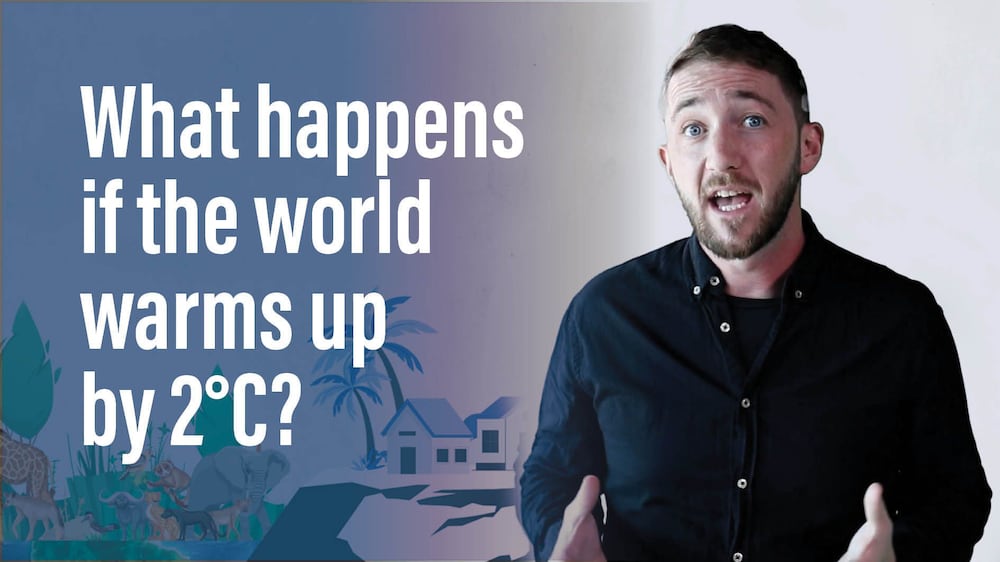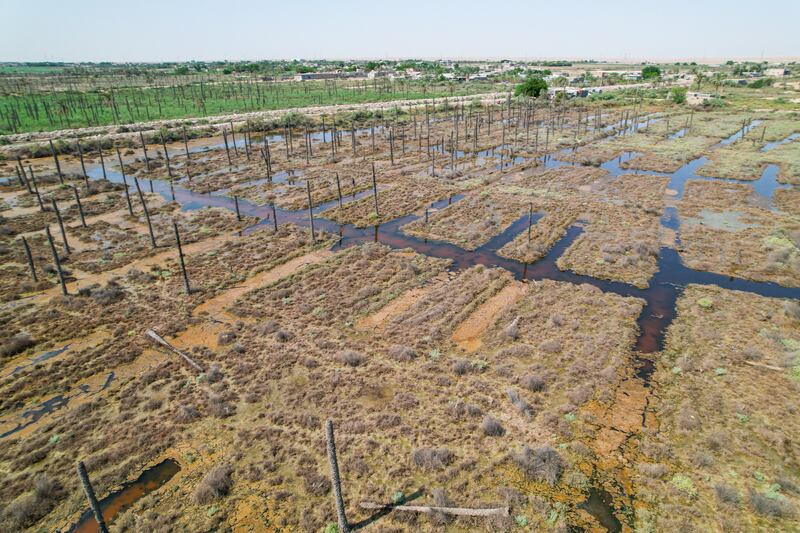Global warming could result in up to 4.4 per cent annual drop in world’s gross domestic product by 2050 if temperatures don't stay well below 2°C, according to a new report.
Physical risks from climate change are increasing and their economic and financial impacts are likely to rise, particularly if countries don't step up investment and reinforce adaptation and mitigation efforts, S&P Global Ratings said.
To assess the economic impact of physical climate risks, S&P applied four shared socioeconomic pathways (SSP) scenarios.
SSPs are a set of scenarios for projected greenhouse gas emissions and temperature changes, and include changes in socioeconomic systems, including population growth, economic growth, resource availability, and technological developments.
The SSP scenarios are: SSP1-2.6, SSP2-4.5, SSP3-7.0 and SSP5-8.5. In the SSP1-2.6 scenario, the rating agency estimates that 3.2 per cent of global gross domestic product may be at risk annually.
SSP1-2.6 is a low-emissions scenario in which the world shifts gradually but consistently towards a more sustainable path.
Under SSP5-8.5, where emissions are high, the report estimates the risk to global GDP could rise to 5.1 per cent.
Lower and lower-to-middle income countries are most vulnerable, least ready to adapt and require the most investment to build resilience to climate risks, it said.
The report comes ahead of this week's Cop28, the UN climate summit in the UAE where world leaders, government officials, policymakers and top executives from the financial and corporate world will attempt to tackle the escalating emergency by trying to agree on ways to halt global warming, adapt to a changing climate and decide on who should foot the bill for the damage already caused.
Climate change will increasingly disrupt economic activity, mainly through the supply side, the rating agency said.
Acute physical climate risks could manifest as more sudden, negative supply-side shocks, which increase output volatility, it said.
The report noted that exposure to the most adverse risks resulting from climate change differs across regions and income groups.
South Asia, for instance, faces three times more potential economic losses than the world average, with around 12 per cent of GDP at risk annually by 2050 under a slow transition scenario.
Sub-Saharan Africa and the Middle East, and North Africa regions face up to 8 per cent GDP risk, while Europe and North America appear less exposed with around two per cent of GDP at risk, the report said.
Lower- and lower-middle income countries already face higher average temperatures and more climate extremes than their upper- and upper-middle income peers. They are also set to face a larger share of damage related to physical climate risk, at about 12 per cent of GDP annually – 4.4 times greater than their wealthier peers, it said.
Investment needs to mitigate these risks differently for different geographic regions, the report said.
Earth 2°C closer to disaster? Global warming's impact exposed

The study findings also confirmed that higher-income countries are better placed than lower-income nations to soften the impact of physical climate risks and recover. “This is thanks to the former's greater financial means and stronger institutions,” it said.
S&P notes that investments in adaptation and resilience are likely to become increasingly important as climate hazards become more extreme.
In terms of readiness and investment to meet climate risks, resource-rich countries are far ahead of their poorer counterparts, the report said.
For example, in the GCC, where extreme heat and water stress are already serious issues, large financial means have enabled these countries to cope better with climate risks.
Upper- and upper-middle income countries may expect greater mitigation costs. But as a proportion of countries' GDP, adaptation costs are much greater for lower-income countries (about 3.5 per cent per year), than for lower-middle (0.7 per cent) or upper-middle income countries (0.5 per cent), the study said, citing a report by UN Environment Programme.
“Our analysis suggests investments in adaptation and resilience are likely to become increasingly important as absolute hazards become more extreme – both in terms of intensity and frequency in many regions – with some risks becoming hard to adapt to entirely,” the rating agency said.
With poorer economies likely to struggle to cope with and adapt to more frequent and severe climate hazards, the burden of impacts will fall disproportionately on the most vulnerable, it said.






